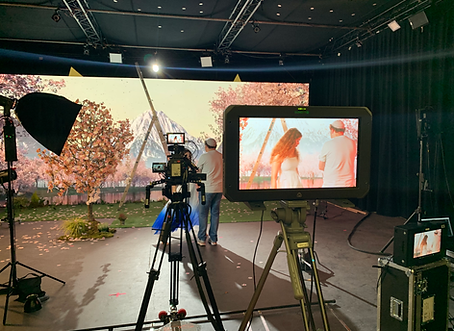
virtual production Studios In London & Gateshead
You have a story. We're here to help you tell it.
Experts in virtual production: plate shoots, 2.5D and full ICVFX.
Our large LED walls, moving walls and camera tracking technologies, plus our cine cameras, professional audio and lighting systems allow us the range to produce advertising, film shorts, live events and more.

Shoot in our large central london or gateshead volumes
Featuring
-
1 x 10.5m x 3.5m curved LED wall (London)
-
1 x 8m x 3.5m curved LED wall (Gateshead)
-
2.5m x 2m moving LED wall on casters
We can fit vehicles, stages, sets and aerial equipment easily under our studio roofs through our shutter doors.
Facilities for cast and crew
StudioT3D in London is proud to house 2 studios under one roof. Feeling adventurous in your storytelling journey? Why not explore volumetric or motion capture alongside virtual production?
At our Gateshead studio, we also house a full photogrammetry rig-the only one of its kind outside Pinewood in London.
When crew and talent arrive to either of our studios, our kitchens, accessible toilets and multiple meeting rooms will ensure all on set are prepared, focused and ready to perform.


Technology to power your shoot
-
2x Blackmagic Ursa Mini Pro 12k
-
2x Red Komodo 6K
-
nDisplay workflow
-
Disguise media servers
-
Unreal Engine for virtual environment creation
active AND PASSIVE TRACKING
Moving wall
wide shutter access to road
Our virtual Production Clients...

...so you know you're in good hands.




What is Virtual Production?

Virtual Production (VP) is a method that blends virtual worlds with real performers, real foreground sets and real objects to make everything appear as though it is in one space.
Traditionally, film-making has followed a natural timeline of Pre-production - Production - Post-Production. Individuals or teams stepped in at the right time - from the script writer to the creatives, then the film crew followed by the special effects teams. Virtual Production has blurred those defined lines; now the film world is created in a digital environment before anyone even steps foot on the physical set.
Virtual Production using green screen technology has been around the longest and still has the potential to make capturing a VP scene relatively simple. Essentially it involves pointing a camera at a green screen, composite that in live then remove the green and replace with a virtual background in post-production. There are products that make VP really quick and easy such as Vanishing Point, a tracked camera that you point at the green screen, which calculates the nodal offset for you. The live composite workflow using a green screen is chiefly used for previs in a commercial setting but has been adopted as a "final product" workflow by other creatives.

Another positive aspect of using a green screen for virtual production is that you have all the time in the world to go back and make it perfect afterwards, which isn’t the case when working with LED walls.

At the Virtual Production Test Stage, which we operated with Digital Catapult, we experimented with Virtual Production using LED walls for more than a year.
Following its success, we now run Studio 1, a dedicated virtual production stage located within StudioT3D in Central London, and AMP PROTO in Gateshead.
To help understand how LED walls are used in VP, it first helps to understand how our brains process movement.
Parallax is the effect where the foreground objects seem to move faster than background objects - for example, if you’re on a train looking at trees in the foreground and mountains in the background, the trees appear to move really quickly and the mountains appear to barely move at all. That’s how our brain processes how far away things are and is echoed when we track a film camera in front of an LED wall. For this workflow the environment runs in real time game engines such as Unreal Engine, with the images showing on the LED wall. The camera is tracked within this environment and the perspective is displayed relative to the wall so that the performer or object in the foreground appears to be moving in the real world.
-min.png)
There are more moving parts in an LED workflow, making it more complicated than green screen shooting, and what you shoot in camera is what you get for your finished piece (called the final pixel). The benefits of LED - being able to control the lighting in real time and the performer being fully immersed in the space - often outweigh these complications.
Who uses VP? We are noticing lots of car advertisements that have been shot using VP - put a shiny new car in front of an LED wall, get the lighting bang on and it can look even better than the real thing. Film producers are still leading the way, but TV broadcasters and the creatives behind music videos are embracing virtual production, as are the creatives behind music videos.
As the use of VP has accelerated at lightning speed, there is something of a skills shortage emerging. The more progressive universities and colleges have already created courses and degrees with this in mind and Target3D are supporting a number of them to teach virtual production skills by installing and providing training for VP technology on campuses.
We're not the new kids on the block; we've been perfecting virtual production for years.
Trust us to get you the results you need.
Frequently asked questions about Virtual Production
What are the benefits / drawbacks to Greenscreen vs LED wall when it comes to Virtual Production. What are common challenges you need to overcome in each? A big benefit to greenscreen is that it is cheap and very accessible. You can make a basic greenscreen setup at home by painting a wall green or putting up a green sheet, and in fact many home filmmakers will do just this. For this reason, greenscreen is considered easier for beginners. Greenscreen may also be considered to have had more refinement, because it has been around longer. However, with greenscreen, chroma keying out or the post-production process of masking out the green, becomes a lengthier process. As for LED filmmaking, there is less focus on post-production, with a shift to pre-production. You get what is called the 'final pixel’ in camera, which essentially means that what you see is what you get. This means the pre-production process is much longer. However, LED also allows for reflections and refractions, allowing filmmakers to capture, for example, a glass of water, which would be extremely difficult with a greenscreen.
How good is the green screen key when used simultaneously with an LED background screen? Greenscreen simulated with an LED can mean the actors are lit with a slight green effect. It can be used in instances where the virtual art department (or VAD) need to make changes to the content. The process could involve shooting all content on a shot list, and then reshooting with greenscreen, but ultimately a whole scene would not be shot in greenscreen on LED--only a single shot or two.
AI and VP – what changes may this bring to virtual production workflows? The biggest change comes with the availability of AI powered asset creation tools, including video AI tools which use generative AI to edit plates. Content creation is thus more easily accessible. In some ways, camera tracking and the rise of markerless camera tracking solutions could be considered AI as well.
Visit our FAQ page for more

Our Team
See who you'll be working with and put a face to the name.














